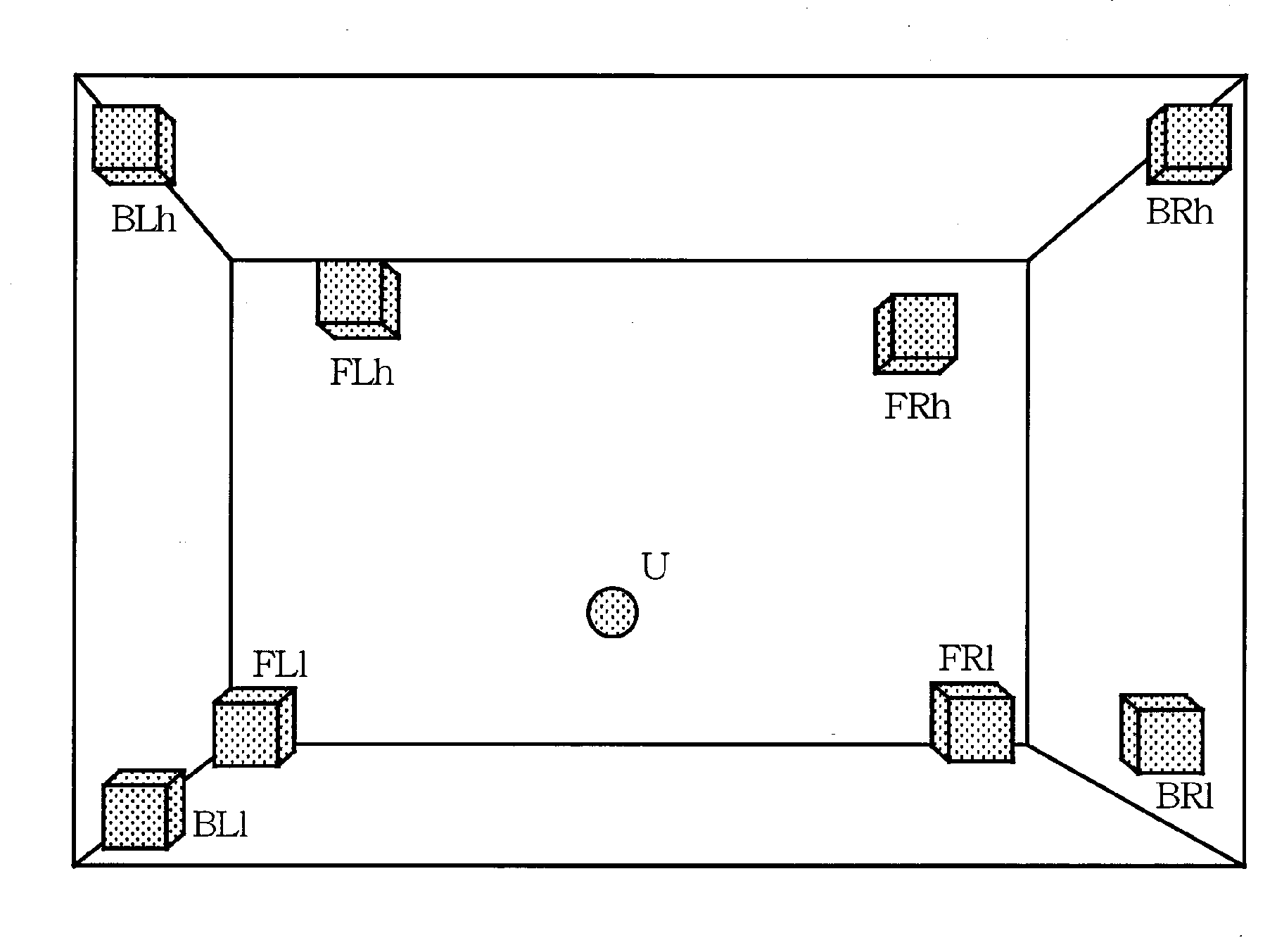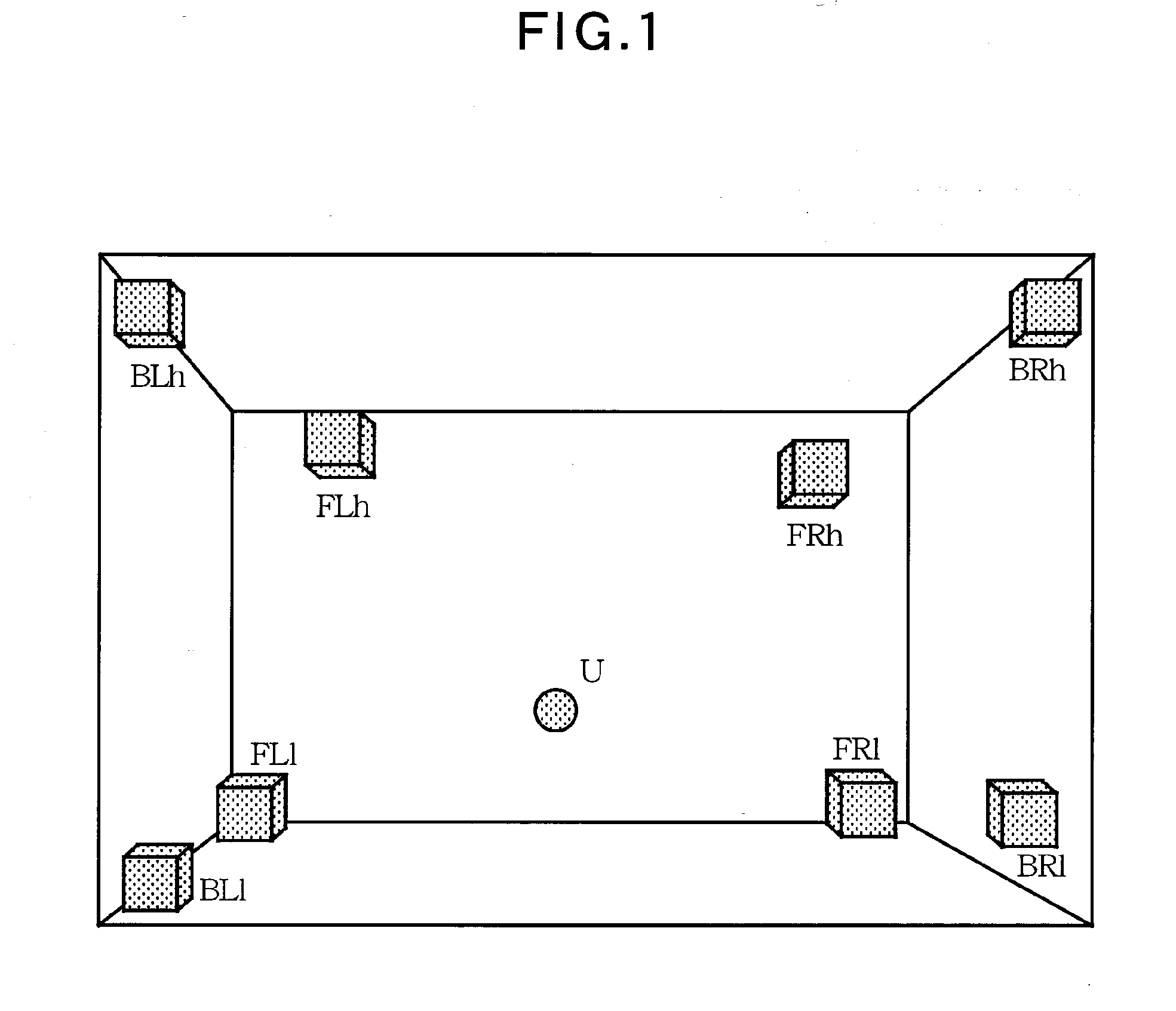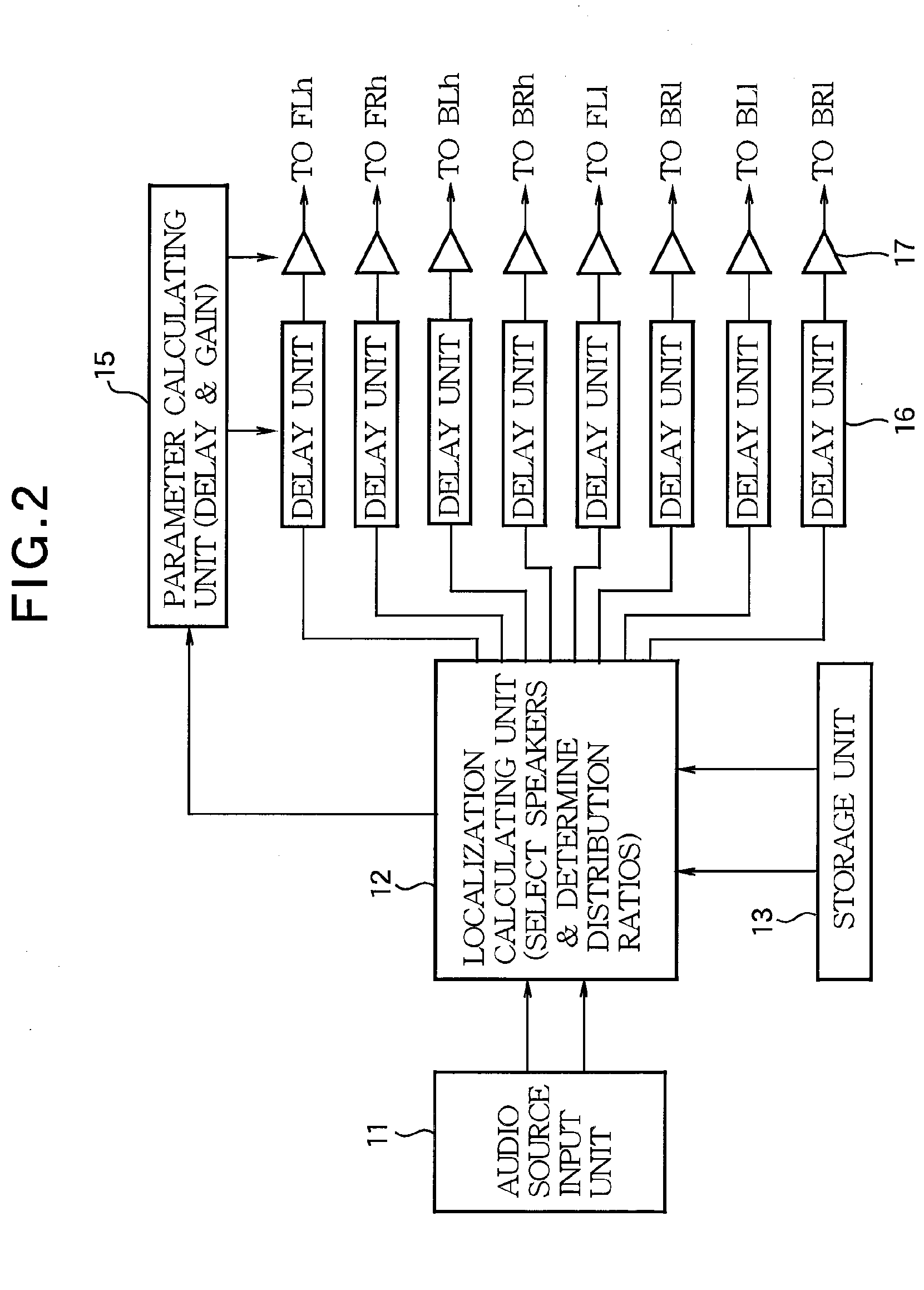Sound Field Control Apparatus
- Summary
- Abstract
- Description
- Claims
- Application Information
AI Technical Summary
Benefits of technology
Problems solved by technology
Method used
Image
Examples
Embodiment Construction
[0024]An audio system according to embodiments of the invention will now be described with reference to the accompanying drawings. This audio system includes 8 speakers that are disposed at different heights in three dimensions and an audio device that provides an audio signal to the 8 speakers. The position of a sound receiving point, i.e., ears of the listener, is included in an approximately rectangular solid space defined by the 8 speakers. Four (or three) speakers are selected based on the localization position of an input audio signal (i.e., the position of a virtual audio source) and the audio signal is output through the selected speakers at appropriate ratios of output levels, thereby sterically localizing the audio signal (the virtual audio source) at a three-dimensional point.
[0025]
[0026]FIG. 1 illustrates an example speaker arrangement of the audio system. Speakers FLh and FRh are mounted at front upper left and right portions in a listening room, speakers FL1 and FR1 ar...
PUM
 Login to View More
Login to View More Abstract
Description
Claims
Application Information
 Login to View More
Login to View More - R&D
- Intellectual Property
- Life Sciences
- Materials
- Tech Scout
- Unparalleled Data Quality
- Higher Quality Content
- 60% Fewer Hallucinations
Browse by: Latest US Patents, China's latest patents, Technical Efficacy Thesaurus, Application Domain, Technology Topic, Popular Technical Reports.
© 2025 PatSnap. All rights reserved.Legal|Privacy policy|Modern Slavery Act Transparency Statement|Sitemap|About US| Contact US: help@patsnap.com



